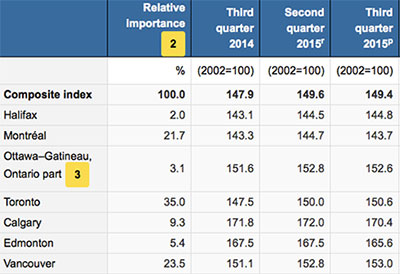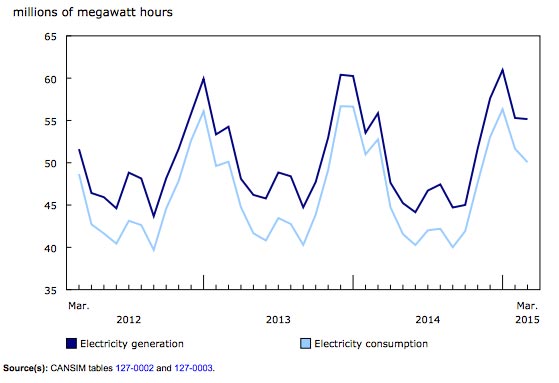IoT Challenges and Opportunities for Electrical Contractors, Part 2

May 5, 2019
Electrical contractors are approaching a tipping point in terms of pursuing roles and opportunities in the growing market of smart buildings, according to Smart Buildings And Internet of Things (IoT) Impact on Electrical Contracting, a new report from Electri International. Part 1 of this 3-part series provided an overview of the IoT challenges facing electrical contractors. Here in Part 2: opportunities.
The report, Smart Buildings And Internet of Things (IoT) Impact on Electrical Contracting, points out that the growing expertise of electrical contractors in the installation of low voltage equipment — for video surveillance, data communications, access control, HVAC, and renewable energy systems — will help position them as systems integrators in the smart building market.
The report goes on to present a roadmap that proposes different strategies for the electrical contracting industry to increase its future role in the smart building market. An effective roadmap includes vision-driven short-term and long-term strategies that aim, through different paths, to transform the industry from its current state to a future state by utilizing the available opportunities to overcome the current challenges. The roadmap is designed for various stakeholders, including electrical contractors, industry and labour groups, training programs, and manufacturers. It consists of seven technology strategies (TS), nine business strategies (BS), and seven workforce strategies (WS). A sampling of strategies for electrical contractors appears here.
Utilize smart lighting as a platform for modular IoT deployment (TS)
Lighting infrastructure provides the optimal platform to deploy more IoT sensors and connectivity, and represents a strategic opportunity for electrical contractors (ECs) to pursue to have the greatest dominance in the smart building market, says the report. Lighting fixtures are considered the perfect edge node in the smart building IoT network due to their guaranteed use in buildings and energy supply availability.
ECs should capitalize on their previous experience with lighting systems as their gateway to infiltrate the smart building market easily by delivering numerous benefits to building owners, tenants, and facility managers. Building energy codes increasingly require efficient LED lighting fixtures, which are much easier to integrate with modular and integrated sensors.
Implement IT-OT security measures (TS)
Increasingly, ECs involved in smart building projects will be required to implement rigorous cyber security measures in their installation, or at least comply with the policies imposed by the IT staff of the enterprise owning the building. IoT-based building systems should be secured from the following perspectives:
• perimeter security: the boundary of accessing the building automation system (on-premises or remotely) should be defined clearly.
• device hardening: the different devices of the building automation and control systems should be protected, either physically or with login passwords. For example, BMS gateways and servers should be physically secured, while field devices should be secured by changing their factory-default login settings. The new Wi-Fi standard (WPA3) will make it easier to secure the many field devices without the need for a graphical user interface.
• segmentation and layering: segmenting the network complements the perimeter security and device hardening measures by clustering network devices into secured layers of authentication and monitoring. The optimal approach, from the IT perspective, is to connect the different IoT-based building systems to different networks. ECs and building integrators need to consider this requirement and ensure that connectivity between these different systems is still maintained through the internal segmented networks.
• encryption: communication messages within the building automation system should utilize rigorous encryption standards. ECs should prepare for the new BACNet standard will be released with stronger encryption methods.
Private cellular network development (TS)
Long-term, it will be common for enterprises to deploy private wireless mobile networks on their premises using radio bands that are currently being democratized and shared without the licensing burden. Private cellular networks can be classified into two main types based on their bandwidth: LTE networks in the 3.5 GHz band frequency and low-power wide-area networks (LPWAN) within the 800-900 MHz band frequency. Large facilities (such as airports, hospitals, and industrial plants) will have increasing drivers for establishing private cellular networks to support their operations.
Utilize prefabrication to add value to building owners (TS)
Electrical contractors have already accumulated varying prefabrication experience. This will be a very critical strategy to increase the value of their services to customers and to overcome some labor shortage issues. Similar to high-voltage systems, prefabrication can be very effective in constructing low-voltage systems by fabricating their common assemblies offsite for faster and safer installations onsite. ECs can utilize prefabrication in multiple approaches: 1) prefabrication shops; 2) procuring prefabricated assemblies from a specialized electrical fabricator; and 3) ordering prefabricated assemblies from manufacturers or vendors.
Partner with system integrators (BS)
Partnering with building system integrators can help an electrical contractor infiltrate into the smart building market and learn about the business practices of system integration services. To partner with building system integrators, ECs need to become familiar with the common attributes of current system integrators. They
• introduce themselves with a customer-focused approach
• are usually drawn from professionals with backgrounds in mechanical contracting and building automation. As such, they provide similar services related to automation controls, HVAC equipment monitoring, and energy audits
• also support their customers by providing building analytics and timely maintenance service
Offer building automation system design/build services (BS)
Historically, mechanical contractors have offered and performed most building automation systems (BAS) work items due to their strong association with HVAC systems. However, some ECs have included the BAS work scope in their services, as these systems started to become more comprehensive and dependent on low-voltage controls and the data network. Strategically, ECs either have to use their low-voltage experience to conquer the BAS market or wait for mechanical and automation controls to expand their BAS scope to integrate all aspects of the building low-voltage systems, such as lighting, access control, and audio/visual work scopes.
Leverage energy upgrade incentive programs and alternative financing (BS)
Unlike green or energy-efficiency buildings, there are no known dedicated programs for smart building system upgrades and installations. Most of the perceived benefits of smart building technologies are internal benefits to the facility owner in terms of tenant comfort and facility management efficiencies. However, some smart building installations can be covered by the existing energy incentive programs.
Partner with tenant-centric BMS providers (BS)
Most Building Management Systems (BMS) focus on serving facility managers by maximizing their ability to integrate and control the major building system. As a long-term strategy, ECs should partner with BMS providers who offer tenant-centric interfaces and capabilities. Facility managers will appreciate the value of installing smart building systems that are easily integrated into a tenant-centric BMS solution. ECs will benefit from this partnership in multiple ways, including getting quality training from the BMS provider on how to integrate the building systems into the BMS and utilizing some of the collected tenant data to include in building analytics and diagnostics services.
Interact with professional facility management organizations (WS)
Electrical contractors are encouraged to maintain an open dialogue with the different facility management and engineering organizations to collaborate on training the future workforce for smart building engineering, construction and maintenance. The smart building workforce that will be hired by facility managers and electrical contractors share common training requirements and qualities.
Read Part 1 in this series here.
Read more about these value-added, higher margin services in Electri International’s 104-page report can be downloaded here.
Watch for Part 3: case studies in an upcoming issue.

















